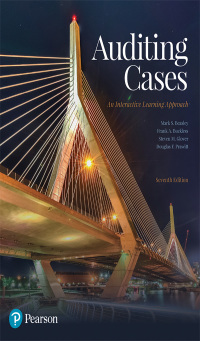In December 1995, the flamboyant entrepreneur, Michael Mickey Monus, formerly president and chief operating officer (COO) of
Question:
In December 1995, the flamboyant entrepreneur, Michael “Mickey” Monus, formerly president and chief operating officer (COO) of the deep-discount retail chain Phar-Mor, Inc., was sentenced to 19 years and seven months in prison. Monus was convicted for the accounting fraud that inflated Phar-Mor’s shareholder equity by $500 million, resulted in over $1 billion in losses, and caused the bankruptcy of the twenty-eighth largest private company in the United States. The massive accounting fraud went largely undetected for nearly six years. Several members of top management confessed to, and were convicted of, financial-statement fraud. Former members of Phar-Mor management were collectively fined over $1 million, and two former Phar-Mor management employees received prison sentences. Phar-Mor’s management, as well as Phar-Mor creditors and investors, subsequently brought suit against Phar-Mor’s independent auditors, Coopers & Lybrand LLP (Coopers), alleging Coopers was reckless in performing its audits. At the time the suits were filed, Coopers faced claims in excess of $1 billion. Even though there were never allegations that the auditors knowingly participated in the Phar-Mor fraud, on February 14, 1996, a jury found Coopers liable under both state and federal laws. Ultimately, Coopers settled the claims for an undisclosed amount.
REQUIRED
[1] Some of the members of Phar-Mor’s financial management team were former auditors for Coopers & Lybrand.
(a) Why would a company want to hire a member of its external audit team?
(b) If the client has hired former auditors, would this affect the independence of the existing external auditors?
(c) How did the Sarbanes-Oxley Act of 2002 and related rulings by the PCAOB, SEC or AICPA affect a public company’s ability to hire members of its external audit team? (d) Is it appropriate for auditors to trust executives of a client?
[2] (a) What factors in the auditor-client relationship can put the client in a more powerful position than the auditor?
(b) What measures has and/or can the profession take to reduce the potential consequences of this power imbalance?
[3] (a) Assuming you were an equity investor, would you pursue legal action against the auditor? Assuming the answer is yes, under what law(s) would you bring suit and what would be the basis of your claim?
(b) Define negligence as it is used in legal cases involving independent auditors.
(c) What is the primary difference between negligence and fraud; between fraud and recklessness?
[4] Coopers & Lybrand was sued under both federal statutory and state common law. The judge ruled that under Pennsylvania law the plaintiffs were not primary beneficiaries. Pennsylvania follows the legal precedent inherent in the Ultramares Case.
(a) In jurisdictions following the Ultramares doctrine, under what conditions can auditors be held liable under common law to third parties who are not primary beneficiaries?
(b) How do jurisdictions that follow the legal precedent inherent in the Rusch Factors case differ from jurisdictions following Ultramares?
[5] Coopers was also sued under the Securities Exchange Act of 1934. The burden of proof is not the same under the Securities Acts of 1933 and 1934. Identify the important differences and discuss the primary objective behind the differences in the laws (1933 and 1934) as they relate to auditor liability?
[6] (a) The auditors considered Phar-Mor to be an inherently “high risk” client. List several factors at Phar-Mor that would have contributed to a high inherent risk assessment.
(b) Should auditors have equal responsibility to detect material misstatements due to errors and fraud?
(c) Which conditions, attitudes, and motivations at Phar-Mor created an environment conducive for fraud could have been identified as red flags by the external auditors?
[7] The popular press has indicated that inventory fraud is one of the biggest reasons for the proliferation of accounting scandals.
(a) Name two other high profile cases where a company has committed fraud by misstating inventory.
(b) What makes the intentional misstatement of inventory difficult to detect? How was Phar-Mor successful in fooling Coopers & Lybrand for several years with overstated inventory?
(c) To help prevent or detect the overstatement of inventory, what are some audit procedures that could be effectively employed?
Step by Step Answer:

Auditing Cases An Interactive Learning Approach
ISBN: 9780134421827
7th Edition
Authors: Mark S Beasley, Frank A. Buckless, Steven M. Glover, Douglas F Prawitt





